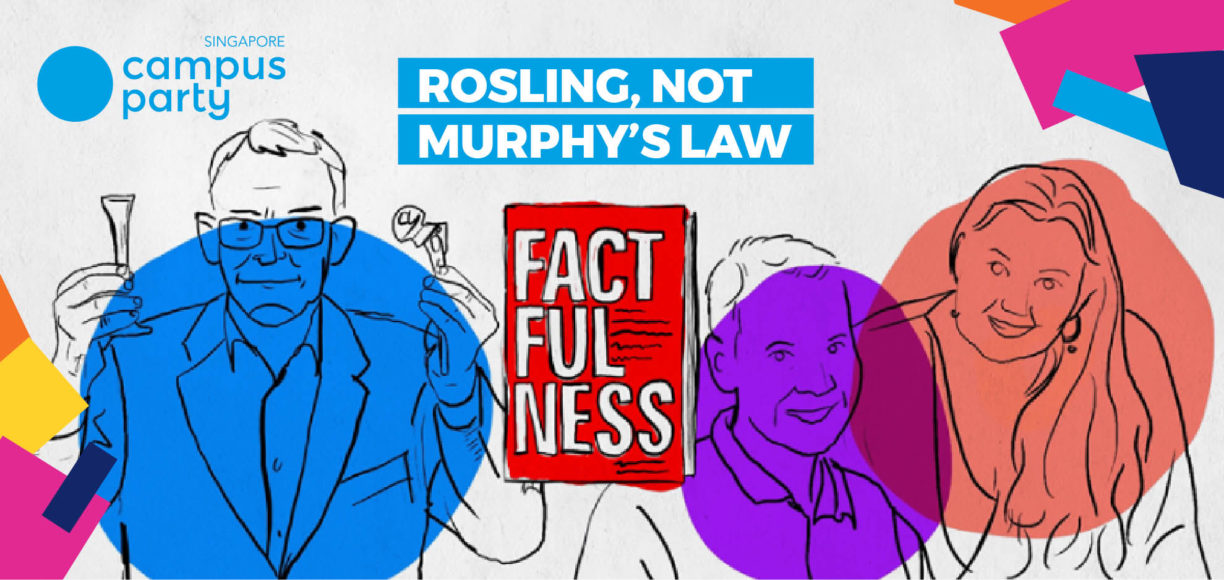Rosling, not Murphy’s Law
- denicechng
- Highlights
- 0 Comments

Murphy’s Law states that if anything can go wrong, it will. Usually uttered to our friends or colleagues in jest when something undesirable happens to us, Murphy’s Law is meant to be a bit of a joke.
As it turns out, many people around the world do seem to hold pessimistic opinions about the world. So have we all taken Murphy’s Law a little too seriously?
The answer is “yes” – according to what Anna and Ola Rosling found during their research, that has culminated in the best-selling book “Factfulness”. The book illustrates how most of us have “over-dramatic worldviews” due to biases. They co-authored the book with the late Professor Hans Rosling, of TED-talk fame. Sadly, Ola’s father passed away before seeing the book published.
Ola Rosling is a brilliant statistician in his own right, making headlines with his Trendalyzer software that is able to transform data into an easy-to-understand, moving bubble charts. It caught the attention of Google which has since acquired the software and renamed it “Motion Chart”.
Meanwhile, Ola’s wife Anna is a talented designer well-known for her Dollar Street project. Looking at the massive collection of photos of people and their homes taken from all over the world, she paints for us the idea that we are more similar than we believe. In reality, the differences lie between people of varying income levels rather than between cultures.
In 2005, the Roslings started the “fact-tank”- as opposed to “think-tank”- known as the Gapminder Foundation. In the course of their work, they were very surprised to find that many people had misconceptions about what the state of the world was. By quizzing people on various topics about poverty, climate, education etc., the Roslings discovered that only a very small percentage got the answers right.
Clearly, misinformation is dangerous as it leads us to take the wrong actions and causes unnecessary anxiety or stress. How did we get to such a situation where we perceive things to be worse than what the statistics are showing?
Very simply, it is due to three different types of biases, so explains Ola Rosling in one of his videos. One of them he refers to as news bias. In the 2014 TEDSalon Berlin event, he provides the humourous example that “a shark attack on a Swedish person would make headlines for weeks”. With such media coverage, shark attacks can be made out to be a serious threat when in actuality, the likelihood of shark attacks is very low.
If you have a phobia of statistics and numbers like I have, you will appreciate the refreshing way in which Ola and Anna Rosling have presented their findings. In their capable hands, statistics no longer is the dry, boring topic as perceived by the general public. It is no longer out of our reach. The numbers tell us fascinating stories about the world in which we live and allows a much greater understanding of ourselves. With so much misinformation out there, we truly need such “fact-based worldviews”, as the Roslings have continuously asserted in their talks.
To find out more about the other two biases we commonly hold, go search out Ola and Anna Rosling yourself at the upcoming Campus Party, https://campuse.ro/events/campus-party-singapore-2018/talk.
For festival passes, click here to purchase your tickets and get your copy of Factfulness signed at our bookstore!



